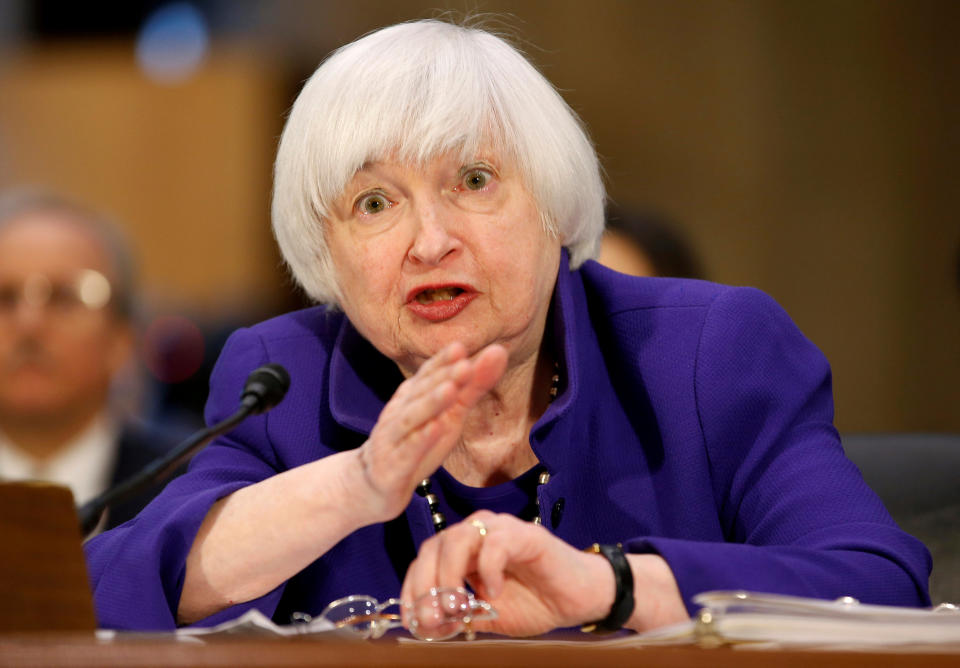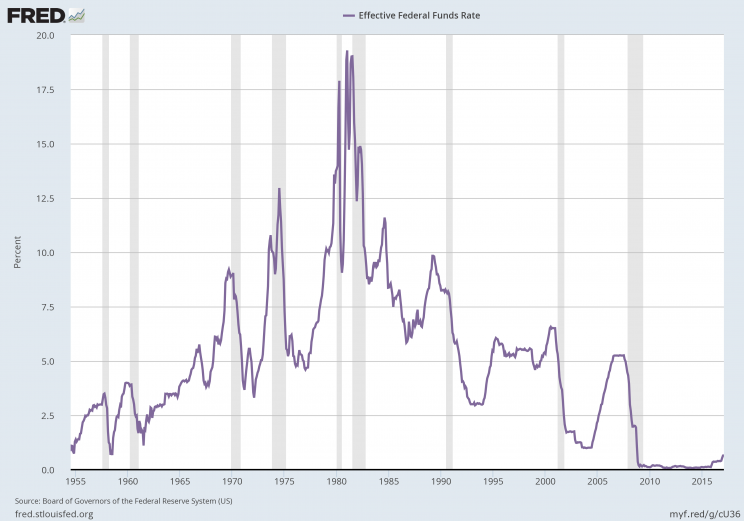The Fed is embarking on a path that usually ends with a recession
Stocks are at record highs.
And while the Trump administration’s early days have been filled with internal political chaos, the market’s reaction has continued to remain positive.
On Wednesday, when U.S. stocks had their best day of the year, the popular SPY ETF (SPY), which tracks the S&P 500, saw $8.2 billion in new inflows, its single-best day since December 2014.
But something else happened on Wednesday that should have equity bulls quite a bit more concerned: markets got behind the idea the Federal Reserve will raise interest rates in March and, perhaps, be more aggressive about raising rates in than previously expected.

On Friday, Fed Chair Janet Yellen signaled that a March rate hike is on the table and said the pace of the Fed raising rates in 2017 would likely exceed that seen in 2015 and 2016.
And while an accomodative Fed has been seen as a backstop for markets during the post-crisis bull run higher, a tighter Fed is bad news for stocks because when rates begin to rise, the end of the bull market has already been signaled.
As we highlighted in our daily market outlook post, David Rosenberg at Gluskin Sheff wrote Thursday that, “Monetary policy is profoundly more important to the markets and the economy than is the case with fiscal policy, though all the Fed is doing now is removing accommodation.”
10 out of 13 times, it ended badly
Rosenberg added that, “there have been 13 Fed rate hike cycles in the post-WWII era, and 10 landed the economy in recession. Soft landing are rare and when they have occurred, they have come in the third year of the expansion, not the eighth.”

When the Fed released its latest Summary of Economic Projections in December, its “dot plot” showed that FOMC members expected the Fed would raise rates three times in 2017. Market consensus at that time was closer to one or two rate hikes at most. In 2015 and 2016, the Fed raised rates just once.
But given the continued improvement in the labor market, inflation data firming, and the renewed bullishness from corporates, consumers, and investors since the election, the groundwork has been laid for the Fed to be more aggressive. As Deutsche Bank economist Joe LaVorgna wrote this week, “With equity prices near historic highs and the recent economic data largely positive, barring a massive downside disappointment in the February employment report, we now expect the Fed to seize this window of opportunity to get another hike on the board in March.”
‘2018 has clouds over it’
We’ve written recently that despite a strong run in the stock market and widespread bullishness from the investor class, you should always be ready for a stock market sell-off because in almost every year, there is one.
These market declines, however, are usually event-driven, sparked by fear about economic growth, or political turmoil, or any other fear that drives investor sentiment. The adage “bull markets don’t die of old age” is one that has been bandied about in recent years. And this is true — bull markets usually end because of recession.
Which makes Rosenberg’s Friday commentary all the more concerning for those worried about stocks.
“We are likely just three or four hikes away from the yield on the two-year T-note converging on the five-year,” Rosenberg writes, “and that is when the fun will really begin in terms of a more serious discussion for the end of this economic, market, and credit cycle — 2018 has clouds over it, and keep in mind that every GOP President in the post-WWII era confronted a recession at some point in the first half of his term.” (Emphasis added.)
—
Myles Udland is a writer at Yahoo Finance. Follow him on Twitter @MylesUdland
Read more from Myles here:
